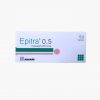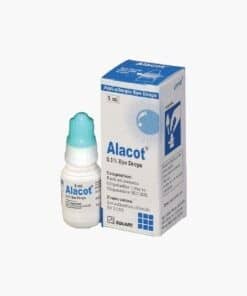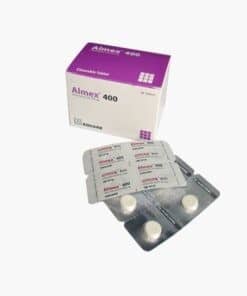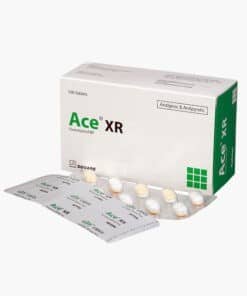Easium 5 | Tablet | 40 pcs
৳ 27.60
Brand Name: Easium Tablet
Generic: Diazepam
5 mg
Manufacturer: Opsonin Pharma Ltd.
Unit Price: ৳ 0.69 (10 x 40: ৳ 276.00)
Strip Price: ৳ 27.60
Indications
Diazepam is indicated for the management of anxiety disorders or for the shortterm relief of the symptoms of anxiety. Anxiety or tension associated with the stress of everyday life usually does not require treatment with an anxiolytic. In acute alcohol withdrawal, Diazepam may be useful in the symptomatic relief of acute agitation, tremor, impending or acute delirium tremens and hallucinosis.
Diazepam is a useful adjunct for the relief of skeletal muscle spasm due to reflex spasm to local pathology (such as inflammation of the muscles or joints, or secondary to trauma), spasticity caused by upper motor neuron disorders (such as cerebral palsy and paraplegia), athetosis, and stiff-man syndrome.
Oral Diazepam may be used adjunctively in convulsive disorders, although it has not proved useful as the sole therapy.
The effectiveness of Diazepam in long-term use, that is, more than 4 months, has not been assessed by systematic clinical studies. The physician should periodically reassess the usefulness of the drug for the individual patient.
Therapeutic Class
Pharmacology
Dosage & Administration
Dosage should be individualized for maximum beneficial effect. While the usual daily dosages given below will meet the needs of most patients, there will be some who may require higher doses. In such cases dosage should be increased cautiously to avoid adverse effects.
ADULTS:
Management of Anxiety Disorders and Relief of Symptoms of Anxiety: Depending upon severity of symptoms 2 mg to 10 mg, 2 to 4 times daily
Symptomatic Relief in Acute Alcohol Withdrawal: 10 mg, 3 or 4 times during the first 24 hours, reducing to 5 mg, 3 or 4 times daily as needed
Adjunctively for Relief of Skeletal Muscle Spasm: 2 mg to 10 mg, 3 or 4 times daily
Adjunctively in Convulsive Disorders: 2 mg to 10 mg, 2 to 4 times daily
Geriatric Patients, or in the presence of debilitating disease: 2 mg to 2.5 mg, 1 or 2 times daily initially; increase gradually as needed and tolerated
PEDIATRIC PATIENTS:
Because of varied responses to CNS-acting drugs, initiate therapy with lowest dose and increase as required. Not for use in pediatric patients under 6 months: 1 mg to 2.5 mg, 3 or 4 times daily initially; increase gradually as needed and tolerated
Interaction
Contraindications
Side Effects
Pregnancy & Lactation
Category D: The use of Diazepam during the first trimester of pregnancy should almost always be avoided as it bears a risk of congenital malformation.
Diazepam has been detected in breast milk. If possible the use of diazepam should be avoided during lactation.
Precautions & Warnings
Diazepam is not recommended for use in patients with depressive disorders or psychosis. Patients should be advised against the concurrent use of alcohol and other CNS depressant drugs. Patients with known or presumed dependence from alcohol or drugs should not take benzodiazepines.
Since Diazepam has a CNS depressant effect, patients should be warned against driving, operating dangerous machinery, or engaging in other hazardous activities requiring mental alertness and physical coordination.
Overdose Effects
Symptoms: Somnolence, ataxia, confusion, dysarthria, little or no resp depression, hypotension, muscular weakness, deep coma, severe depression, diminished reflexes.
Management: Symptomatic and supportive treatment. Empty stomach by vomiting or gastric lavage. Activated charcoal may help reduce absorption. Flumazenil may be used for the complete or partial reversal of the sedative effects but there is a risk of seizure esp in long-term benzodiazepine users and in cyclic antidepressant overdose.
Storage Conditions
| Generic Name | Diazepam |
|---|---|
| Size | 5 mg |
Only logged in customers who have purchased this product may leave a review.












Reviews
There are no reviews yet.